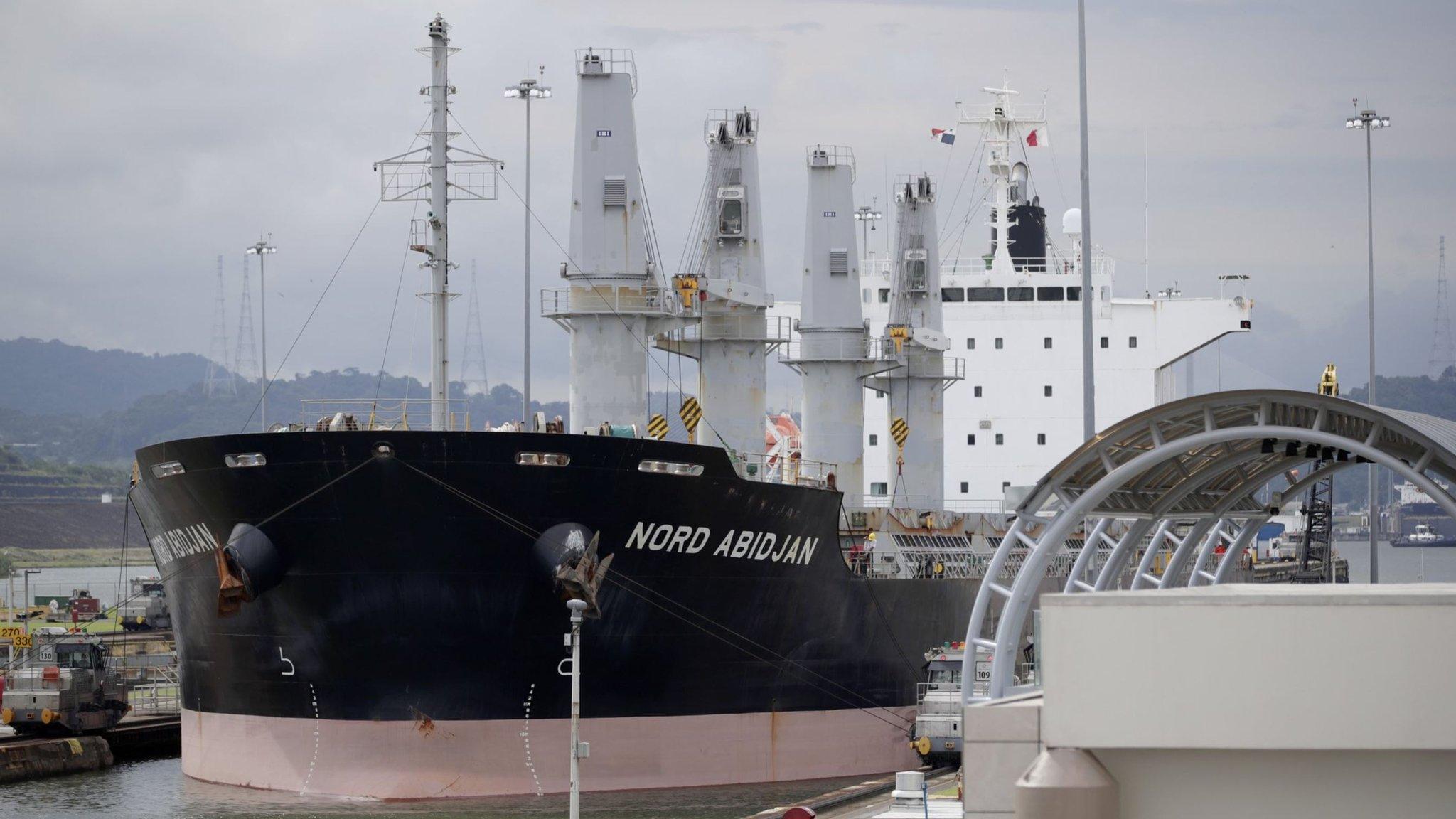El Nino drought: Panama Canal cuts ship numbers further
- Published

The Panama Canal will make more cuts to the number of ships using the waterway due to the worst drought in over 70 years, authorities say.
The Panama Canal Authority (ACP) says it has been forced to make the decision due to the driest October since records began in 1950.
The El Ni帽o weather phenomenon has contributed to the severe drought, the ACP says.
It is expected to increase the cost of shipping goods around the world.
The Panama Canal greatly reduces the time and distance for ships to travel between the Atlantic and Pacific oceans. Operating 24 hours a day, 365 days a year, between 13,000 and 14,000 ships use it annually, according to the canal authority.
A naturally occurring El Nino climate pattern associated with warmer-than-usual water in the central and eastern tropical Pacific Ocean is contributing to Panama's drought.
Water levels in Gatun Lake, the rainfall-fed reservoir that is the main source of water used in the canal's lock system, have "continued to decline to unprecedented levels for this time of year," according to the ACP.
Starting from 3 November, booking slots will be cut to 25 per day from an already reduced 31 per day, .
That number will be further reduced over the next three months to 18 slots per day from the start of February 2024.
In recent months, the ACP has imposed various passage restrictions to conserve scarce water.
Earlier this year, authorities cut the number of ships passing through the canal for the first time ever.
The measures already in place have caused long delays, with tens of ships having to wait to use the canal.
Those delays have "pushed shipping rates higher elsewhere by decreasing the globally available number of vessels," according to an analyst note from the US Energy Information Administration.
Delays for some gas transporters were at record highs in Panama, pushing up the cost of shipping liquefied gas from the US, it added.
- Published9 August 2022